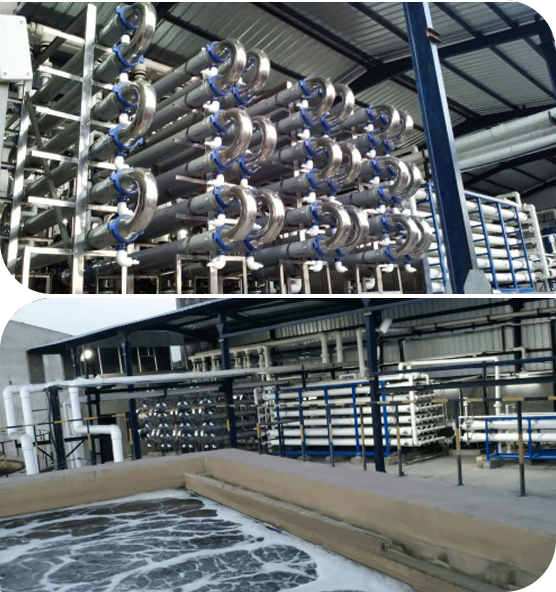
Waterman Engineers Australia is amongst the main manufacturers of Zero Liquid Discharge program. A ZLD program can be a cure system which happens to be used to eliminate all the liquid squander from a method. The aim of ZLD water treatment is to lower wastewater economically and develop potable drinking water which is suit for regular use. Zero discharge system is a complicated remedy technique that comprises ultrafiltration, reverse osmosis, evaporation and fractional electro deionization. And we've been a properly-identified provider of ZLD programs.
In many Industries, for instance electricity, oil & gas, chemical compounds, mining and Other individuals, a great deal of wastewater is generated that needs to be managed. Conventionally, this discharge of wastewater is done by means of a plant outfall to some floor water overall body like an evaporation pond, or in some cases deep very well injected. These methods bring on numerous environmental problems by the general public in many areas of the world, as water is often a scarce resource and its management needs to be monitored. These fears have resulted within the establishment of ZLD procedures by quite a few industries to reduce their environmental footprint and improve sustainability. And, Waterman Engineers Australia are ideal ZLD suppliers you can find for this system.
Homes OF ZERO LIQUID DISCHARGE Process
The Attributes of the Zero Liquid Discharge system may vary dependant upon the unique design and engineering employed. Even so, some prevalent Houses of ZLD devices involve:
H2o Conservation: Considered one of the first aims of ZLD programs is usually to conserve water by reducing the discharge of liquid waste in to the atmosphere.
Higher H2o Purity: ZLD devices are built to make large-high quality h2o that is definitely cost-free from impurities and contaminants, which makes them well suited for use in lots of industrial processes.
Flexibility: ZLD methods will often be intended to accommodate a wide array of enter liquid streams, which makes them functional and appropriate for use in various industries.
State-of-the-art Wastewater Therapy: Zero liquid discharge units use Innovative wastewater treatment techniques to remove impurities and contaminants with the effluent, creating significant-high quality drinking water.
Squander Reduction: ZLD systems support reduce waste by minimizing the quantity of liquid waste that needs to be disposed of and by making a concentrated, good waste materials Zld System Manufacturer Zero Liquid Discharge System that could be properly disposed of.
Power Effectiveness: ZLD programs is usually Power-intensive a result of the significant energy specifications of evaporation and also other wastewater cure procedures. On the other hand, advances in technologies are producing Zero liquid discharge techniques far more Strength-productive and value-successful.
Waterman Engineers Australia manufactures Zero Liquid Discharge (ZLD) techniques created to get rid of all liquid waste, aiming to produce potable h2o and limit environmental impression. Their ZLD programs generally contain ultrafiltration, reverse osmosis, evaporation, and fractional electro deionization. Important systems applied are Falling Movie Brine Concentrators, Pressured Circulation Crystallizer, and Other individuals, having a two-step strategy of pre-concentration and evaporation/crystallization to Get better and reuse drinking water. These methods are adaptable to distinctive industries, emphasizing drinking water conservation, higher h2o purity, waste reduction, and Electrical power effectiveness. Technological specs are varied and customizable, looking at aspects like h2o source, move charge, and feed h2o high quality.
The necessity for Zero Liquid Discharge (ZLD) systems arises within the necessity to handle environmental concerns connected with h2o scarcity and pollution. In industries like electricity, oil & fuel, and mining, huge quantities of wastewater are created. Historically, this wastewater is discharged into bodies of drinking water, resulting in air pollution and depleting thoroughly clean h2o resources. ZLD devices purpose to minimize these impacts by treating and recycling wastewater within the industrial process, thus conserving water, lowering waste, and advertising and marketing sustainability.
When thinking about the technical specifications of a Zero Liquid Discharge (ZLD) method, crucial factors to center on involve the h2o resource it will eventually treat, the system's flow rate, the quality of feed h2o, the phases of treatment method included, the recovery price of water, methods for focus disposal, elements of development, working situations, and method automation and control. These factors make sure the program's usefulness, durability, and performance in treating and recycling industrial wastewater.
Zero Liquid Discharge (ZLD) crops present Positive aspects including water conservation, squander reduction, and pollution avoidance, contributing to environmental sustainability. They're relevant in industries like energy technology, oil and gasoline, chemicals, and mining, wherever they help in taking care of industrial wastewater efficiently, decreasing the ecological footprint, and complying with rigorous environmental laws. These units are critical in locations experiencing water scarcity and for industries aiming to boost their sustainability and operational performance.
FAQs for any Zero Liquid Discharge (ZLD) procedure usually handle its operational principles, Charge-effectiveness, upkeep prerequisites, environmental effect, applicability throughout many industries, and regulatory compliance. These concerns enable users realize the process's benefits, specialized calls for, and suitability for his or her unique wastewater administration needs.
1. Zero Liquid Discharge (ZLD) is actually a wastewater cure system designed to get rid of all liquid waste.
2. The method's elements are influenced by the specific industrial method, wastewater composition, and regulatory demands.
3. Effluent remedy plants get rid of pollutants from textile effluents to avoid environmental contamination.
4. Benefits consist of water conservation, air pollution reduction, and regulatory compliance.
five. The purpose is to reduce environmental influence by recycling water and reducing squander.
6-9. Effluent procedure crops are phases in wastewater therapy: Main (Actual physical separation), secondary (Organic remedy), and tertiary (Sophisticated treatment).
ten. Unit functions incorporate filtration, sedimentation, biological procedure, and disinfection.
eleven. Limiting parameters are components that have an impact on the remedy's performance, like pH and contaminant concentration.
twelve. Layout factors include stream charge, effluent composition, and desired excellent of handled h2o.